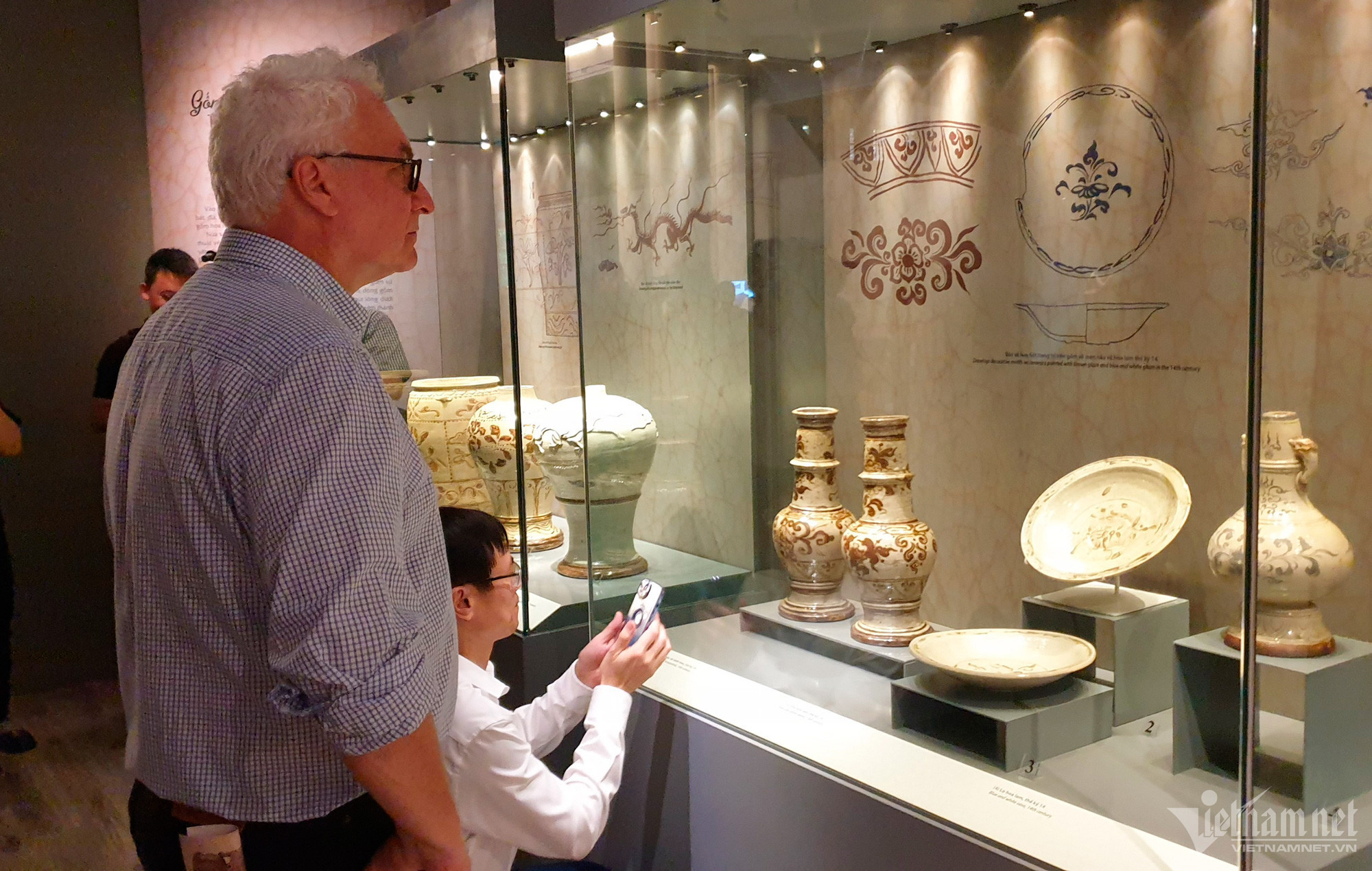
Tinh Le
The exhibition opened on May 18, introducing to the public the distinctive artifacts of Bat Trang pottery from the 14th-20th centuries.
"Bat Trang Pottery Village made many precious ceramic items with their own nuances, which have been popular over the centuries, from villages to royal palaces, from folk worship items to diplomatic tributes," said Dr. Nguyen Viet Doan, director of the Hanoi National Museum of History.
The pottery works on display are selected based on development periods of the village. The 14th century was the period when Bat Trang pottery flourished thanks to the open trade policy. In the 15th - 16th centuries, Bat Trang was a specialized production center with high technical and artistic products, with its products sold domestically and exported.
At the end of the 17th century and the beginning of the 18th century, Bat Trang pottery had a significant domestic consumption market with household items, worship items, decorations and construction bricks.
The exhibition is divided into four parts, including "History of Establishment", "Bat Trang Pottery in the 14th Century", "Bat Trang Pottery in the 15th to 18th Century", and "Bat Trang Pottery in the 19th to 20th Century".
Through the exhibition, the National History Museum aims to introduce a rich collection of glazed ceramics with historical, cultural, and artistic value to the domestic and foreign public, thereby raising awareness of preserving and promoting national cultural and historical values.
The exhibition will last until the end of September 2023 at the National Museum of History, 1 Trang Tien, Hanoi.











Tinh Le